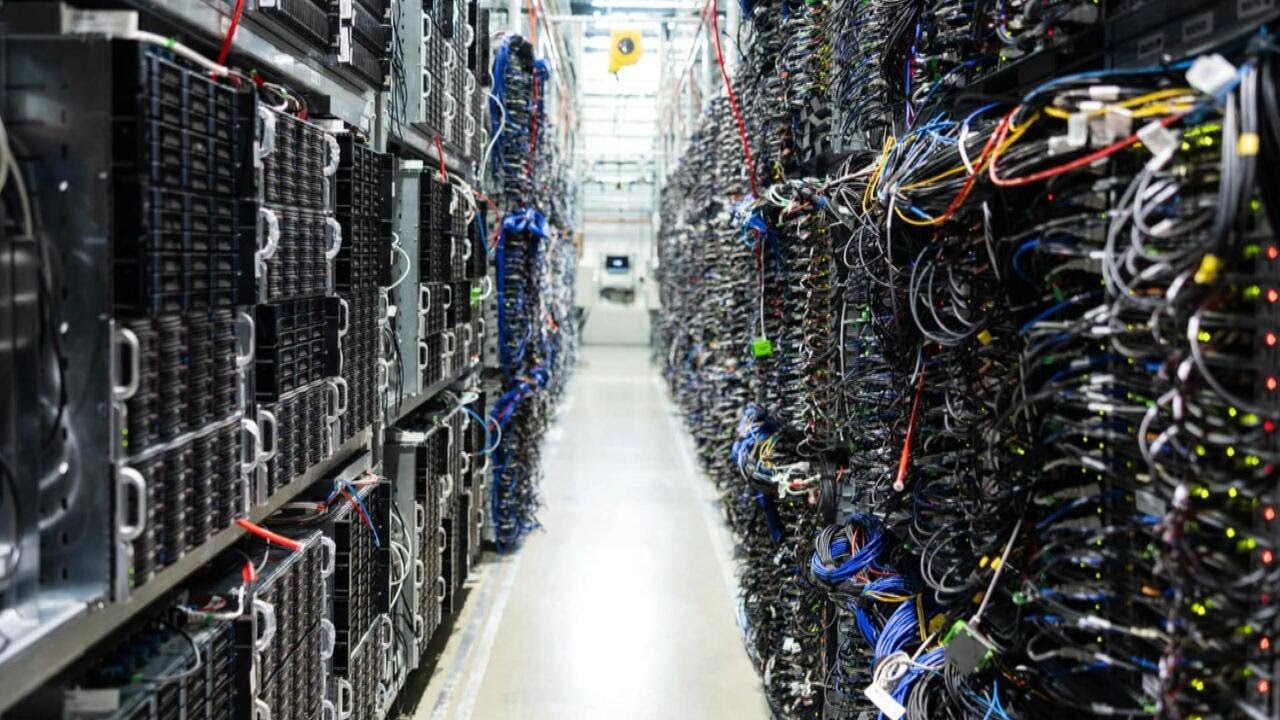America’s power grid is under increasing strain due to the rapid growth of AI, which demands significantly more energy than traditional internet activities, prompting major investments like Google’s $25 billion commitment to modernize energy infrastructure. While this surge in AI energy use poses short-term climate challenges, it also holds potential for long-term environmental benefits, all amid a competitive geopolitical race with China to lead in AI and clean energy innovation.
The video discusses the increasing strain on America’s power grid, not only due to extreme heat and air conditioning demands but significantly because of the rapid growth of artificial intelligence (AI). Major tech companies like Google and Meta are investing heavily in upgrading the power infrastructure to support their AI ambitions. Google, for instance, has pledged $25 billion over the next two years to modernize energy infrastructure across a vast electrical grid spanning 13 states and Washington DC, including a $3 billion commitment to modernize hydroelectric power plants in Pennsylvania. This investment aligns with recent announcements of over $90 billion in private sector investments in AI and energy projects, highlighting the urgency of addressing energy demands driven by AI.
Nick Thompson, CEO of The Atlantic and former editor-in-chief of Wired, explains why AI consumes significantly more power than traditional internet searches. Training AI models requires massive computational resources, and even using AI for tasks like generating responses demands far more processing power than a simple Google search. This increased demand puts considerable pressure on the power grid, potentially leading to higher electricity costs for consumers unless there are substantial investments in clean and reliable energy sources.
The video highlights a critical challenge: AI’s rapid growth is outpacing the slower, capital-intensive process of expanding and modernizing power generation. This mismatch could lead to energy shortages and grid strain in the near future. While investments like Google’s hydroelectric modernization are promising, the U.S. is still lagging behind countries like China, which recently added 93 gigawatts of solar power in a single month. This comparison underscores the need for the U.S. to accelerate its clean energy infrastructure development to keep up with AI’s growing energy demands.
Regarding climate change, the video presents a nuanced view. In the short term, AI’s high energy consumption is detrimental to climate goals, as it increases demand for electricity, much of which still comes from fossil fuels. However, AI also holds promise for long-term environmental benefits by enabling more efficient scientific research and innovations, such as reducing carbon emissions in cement production, optimizing airplane routes, and advancing solar technology. The hope is that AI will eventually contribute to solving climate challenges, though this impact may take time to materialize.
Finally, the video touches on the broader geopolitical context of the AI and energy race between the U.S. and China. While the U.S. leads in foundational AI research and benefits from a culture of innovation and immigration, China excels in robotics, industrial manufacturing, and rapidly expanding clean energy capacity. Both countries have strengths and weaknesses, and ongoing competition is driving innovation on both sides. The discussion concludes with a reflection on the importance of continued investment and innovation to maintain technological leadership and address the intertwined challenges of AI growth, energy demand, and climate change.
